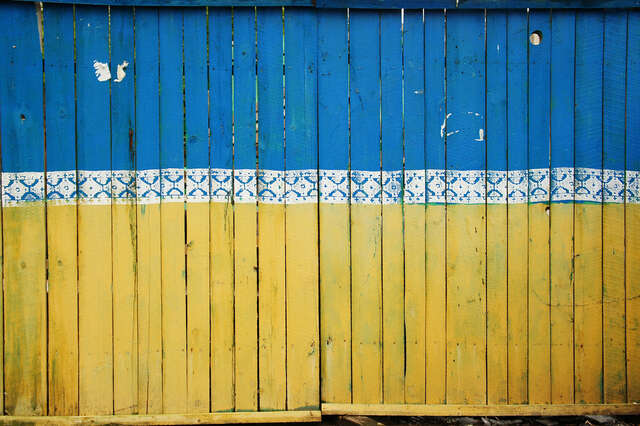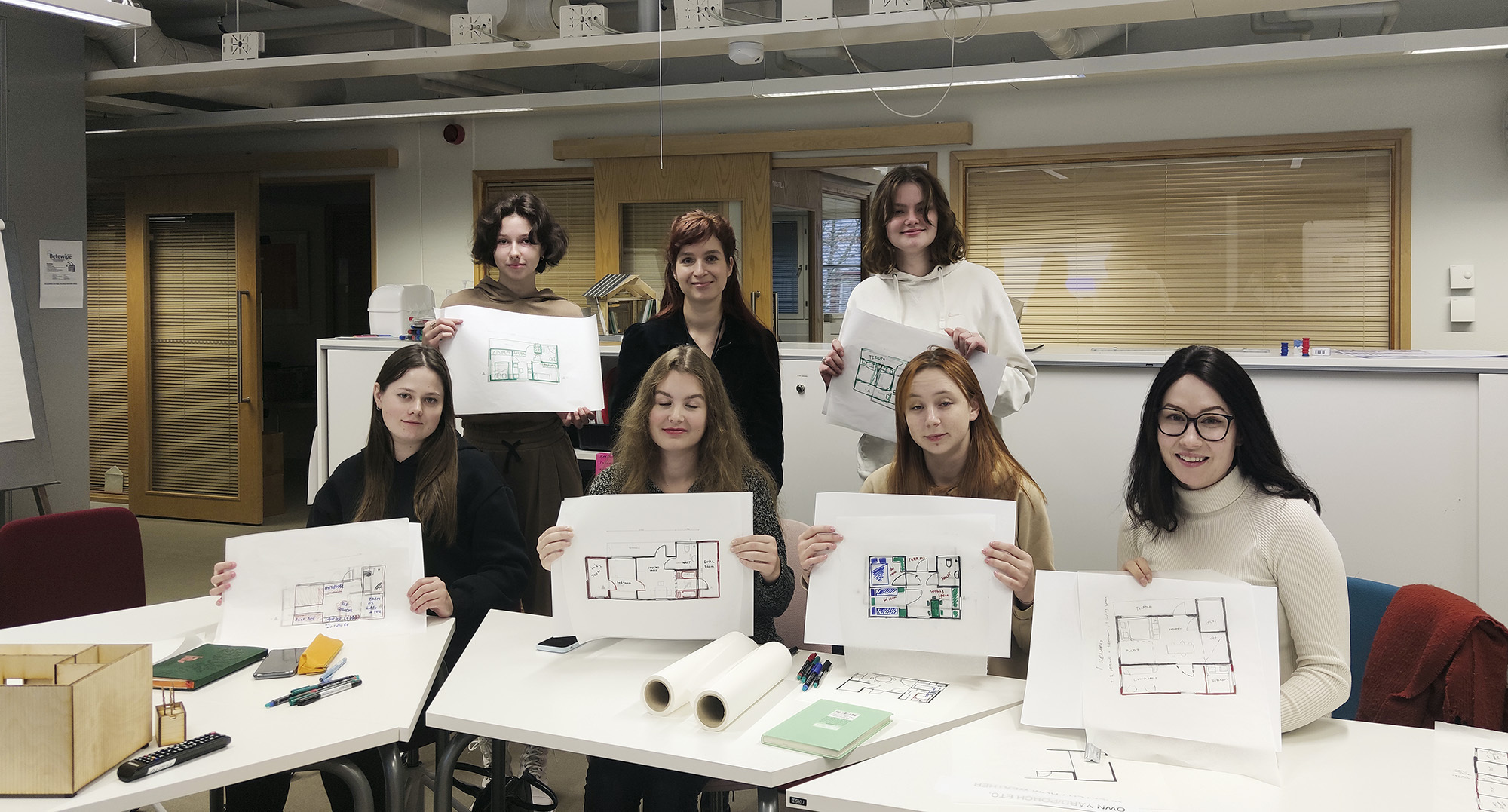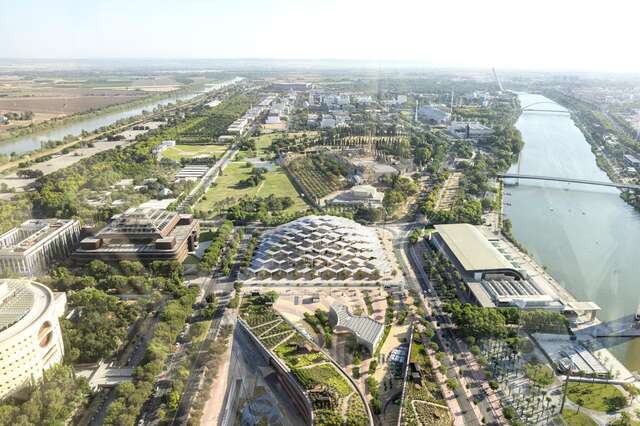Tampere University School of Architecture examines reconstruction with Ukrainian architecture students

Tina Hartung
The Reconstruction Design course provides solutions for the reconstruction of Ukraine and reinforces interaction between Finnish and Ukrainian architecture operators.
The Russian invasion of Ukraine has caused, in addition to widespread human suffering, the destruction of the built environment and physical infrastructure on a massive scale.
While the war and conflicts are still active, the recovery and reconstruction of Ukraine have already become highly urgent tasks of unified Europe. European Union has already launched multiple reconstruction initiatives and financial instruments that expand from emergency aid and the maintenance of critical infrastructure towards long-term reconstruction.
Architects play a central role in the reconstruction efforts in Ukraine. New architectural research perspectives are also required as, in addition to reconstruction design, multiple other factors need to be taken into consideration, such as ecological sustainability and green transition.
In the autumn of 2022, the Tampere School of Architecture organised a course titled ‘Reconstruction design’ for Ukrainian architecture students who continue their studies in Finland. During the course, the students produced concrete architectural proposals to reconstruct destroyed infrastructure, and examined historical examples of reconstruction under the guidance of Professor Juho Rajaniemi, Post-doc researcher Iryna Serhiiuk and guest lecturers.
The course, which continues this spring under the theme ‘Urban reconstruction’, provides an example of how architectural education and research can participate in the massive effort of recovering from the war. Rajaniemi reflects the idea of the course:
"After the Russian invasion of Ukraine, together with Nordic and Baltic architecture schools we sought for ways to help Ukrainian architects and architecture students. The reconstruction of Ukraine will be a massive task, and it is already at hand. Our unit at Tampere University seeks to play its small part in it."
Furthermore, the course provides much-needed interaction between the Finnish and Ukrainian academics working in architecture research and education. According to the Ukrainian scholar Serhiiuk, the course provides opportunities to develop architecture education and combine different practices and traditions.
Historical trajectories of reconstruction
A recurring theme in the discourse concerning the reconstruction of Ukraine has been the historical trajectory of reconstruction periods. For example, the President of the European Commission, Ursula von der Leyen, who is behind the New European Bauhaus initiative, has declared that the reconstruction of Ukraine ought to be done "in the spirit of the Bauhaus". The Bauhaus art and architecture school, founded in 1919, provides one of the most famous historical references regarding how architecture and design can respond to social crises in the aftermath of a destructive war.
Consequently, in Finland, many have seen parallels between the current situation in Ukraine and the reconstruction period after the second world war, known particularly for the now-iconic type-houses for domestic refugees and war veterans. Serhiiuk and Rajaniemi account that the course has examined, for example, the history of Puutalo Ltd., an enterprise producing factory-made wooden houses from 1940 onwards, and included site visits to the Tampere veteran village (asevelikylä in Finnish) designed by Alvar Aalto to tackle housing shortage after the war. Rajaniemi sees great potential in this historical trajectory:
"Reconstruction during and after war means building with minimal resources. The innovations made in the Finnish reconstruction might still have relevance in Ukraine: for example, practices such as standardisation and type-planned houses that can be produced from local timber and constructed collectively, could be adapted in the reconstruction of Ukraine.”
The creative utilisation of scarce resources also calls for new ways of thinking: reconstruction can also be a way to discover new uses for existing buildings in need of repair.
The students of the course visited in Seinäjoki a building, which was originally built as a cowshed in the 1890s and reconstructed in 2020 into an art and culture centre, Kalevan Navetta. The repair and transformation works were designed by architects Teemu Hirvilammi and Anne Kaivo-oja. Hirvilammi, who alongside running his design studio teaches architecture at the University of Tampere, presented the building to the students.
"A closer acquaintance with Finnish architecture, artisanal traditions and construction techniques made quite a strong impression on the students", says Serhiiuk.
Inspiring site visits related to reconstruction will continue this spring and summer as the students will visit Rovaniemi, a northern Finnish city the centre of which was reconstructed from scratch after its destruction in the second world war. Another upcoming site visit is Kiruna, a Swedish town currently being entirely relocated due to the expansion of the iron ore mine.
Reconstructing Ukraine

Various site visits and historical trajectories of reconstruction prepare the students for their own reconstruction projects. The student projects in the autumn term proposed new buildings to replace ones destroyed by the Russians. The projects included multiple building types from residential buildings in Kyiv to a university building and a museum complex in Kharkiv and a sports arena in Chernihiv among others.
In reconstruction, the design brief is more extensive than just the material dimension. It also comments on the symbolic dimension of the destroyed built environment.
"The reconstruction of such buildings is important and symbolic from cultural, historical, and educational aspects, because they are components of our identity, and through them we preserve our values and transmit them to future generations", ponders Serhiiuk.
"The ethical, aesthetical, functional and symbolic dimensions were all combined in the proposals", continues Rajaniemi.
On the other hand, reconstruction is primarily meant for future use. For Serhiiuk, a pleasant surprise in the student work was a thorough approach to reconstruction with the awareness that certain things must be preserved in their original form, while others must be completely modified and improved to avoid previous shortcomings. This also lead to surprising parallels.
For instance, one of the students created a project to reconstruct a highly standardised residential block from the Soviet era. She suggested that, in addition to repairing the damaged buildings, the former Soviet flats can be simultaneously converted further. According to her, it was the Finnish modern residential architecture that gave her the idea to enhance the living area, organise communal areas for residents, and design the building's exterior with muted colours and a combination of wood, glass, and concrete to emphasise the main features without adding extraneous details.
The future of reconstruction
It is clear that the reconstruction of Ukraine is a process that requires shared responsibility, coordination and massive resources for decades. At the same time, it is also important to think about what we as operators in architecture can do here and now. Regarding this, Serhiiuk sees an interesting parallel between Ukrainian and Finnish agencies.
"In fact, Finland and Ukraine have many similar pages in history, such as post-war reconstruction and Soviet influence. Such exchanges, studying and cooperation are a great start for further joint projects – there is enough work in reconstructing our country for everyone. I hope that soon Finnish students will be able to visit peaceful Ukraine and such cooperation will become a good tradition in the future."
Also Rajaniemi finds the Reconstruction design course an excellent example of direct interaction that has great future potential: "We already have acquired great contacts to Ukraine, and I am certain that they will last for long. Finland needs to find ways to help reconstruct Ukraine, and we wish to be a part of it in the future as well."


